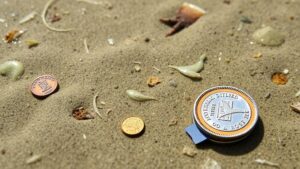Recognizing Symbols That Represent Sunlight-Based Timing Clues on Maps
Recognizing Symbols That Represent Sunlight-Based Timing Clues on Maps
Understanding how to interpret sunlight-based timing clues on maps is crucial for various applications, including navigation, agriculture, and urban planning. Symbols representing sunlight can offer significant information about the natural landscape and the best times for activities influenced by sunlight, such as planting crops or conducting fieldwork. In this informative article, we will delve into how these symbols are represented on maps, their practical applications, and the underlying principles that guide their use.
Understanding Sunlight on Maps
Maps often utilize symbolic representations to convey complex information at a glance. Sunlight indicators can include sun symbols, shadow lines, and gradient shading to denote areas with varying levels of exposure to sunlight over the course of a day or year.
These symbols are particularly significant in contexts such as:
- Agricultural planning, where understanding sunlight exposure can dictate planting and harvesting schedules.
- Urban planning, where sunlight exposure can influence building designs and public spaces.
- Ecological studies, providing insight into habitat conditions for wildlife and plant growth.
The Role of Sunlight in Environmental Science
Sunlight is a fundamental factor influencing the growth and distribution of both flora and fauna. Understanding sunlight patterns can directly impact environmental conservation strategies and sustainability efforts. For example, the Global Land Cover Map produced by NASA includes data layers that represent sunlight availability, which can help policymakers make informed decisions regarding land use.
Maps often employ the following symbols to represent different aspects of sunlight:
- Sun Icons: Typically used to indicate optimal sunlight areas, these icons suggest where certain activities, such as farming or solar energy collection, would be most effective.
- Shadow Symbols: Representing areas that receive less light, these icons can indicate spaces that may be less suitable for solar-dependent activities or plant growth.
- Gradient Shading: Shaded areas often display differences in sunlight exposure, with darker shades indicating lower sun exposure while lighter shades suggest higher exposure.
Using the Suns Path in Mapping Techniques
One effective technique for representing sunlight on maps involves understanding the suns path across the sky. Utilizing a solar path diagram, which illustrates the sun’s trajectory on a given day and location, can guide the creation of maps that accurately represent sunlight availability.
These maps are crucial for a variety of real-world applications, such as:
- Solar Panel Installation: A map that depicts sunlight availability can help determine the best locations for solar panel installation, maximizing energy capture.
- Architectural Design: Architects can utilize this information to design energy-efficient buildings that maximize natural light and minimize heating costs.
- Environmental Restoration: Knowing sunlight patterns can aid in planning restoration projects by identifying optimal planting areas based on sunlight needs.
Case Studies in Mapping Sunlight Indicators
Several case studies can illustrate the practical application of sunlight indicators on maps. For example, in a project conducted by the University of California, Davis, researchers linked sunlight mapping with crop yields. By using sunlight exposure maps, they were able to boost agricultural output by 20% by advising farmers on which crops to plant based on available sunlight.
Similarly, urban planners in cities such as Copenhagen have utilized sunlight maps to design public spaces that maximize enjoyment of natural light, improving urban livability. Utilizing accurate sunlight symbols ensured that the designs were not only aesthetically pleasing but also functional throughout the year.
Limitations and Considerations
While the use of sunlight symbols on maps provides significant benefits, there are notable limitations to consider. For example, local topography, seasonal variations, and climate can greatly influence sunlight exposure. So, it is essential for users to consider these factors in conjunction with the sunlight symbols observed on maps.
Plus, the accuracy of these symbols can vary based on the quality of the map data and the methods used to collect it. Ensuring the use of reliable data sources and advanced mapping techniques is critical to avoid misinterpretation.
Conclusion: Taking Action with Sunlight Symbols
To wrap up, recognizing and interpreting sunlight-based timing clues on maps can provide valuable insights across many fields. By carefully examining symbols that represent sunlight exposure, users can make informed decisions that enhance productivity in agriculture, promote efficient urban planning, and support environmental conservation efforts.
As a takeaway, anyone interested in utilizing sunlight information for practical applications should:
- Familiarize themselves with the various symbols related to sunlight on their maps
- Consult local sunlight exposure studies to validate and supplement map information
- Engage in ongoing education about advancements in mapping technology and solar studies to improve decision-making processes.



